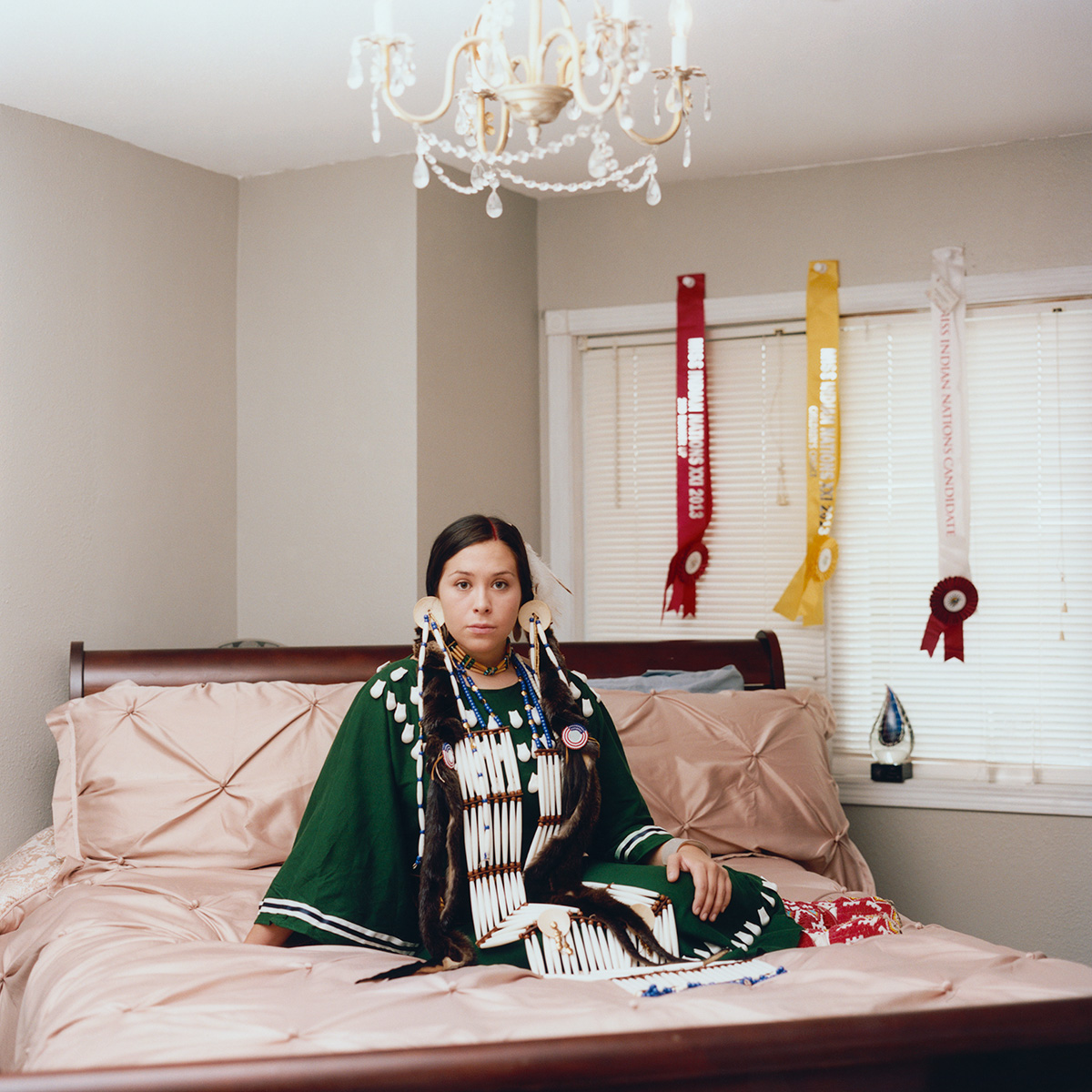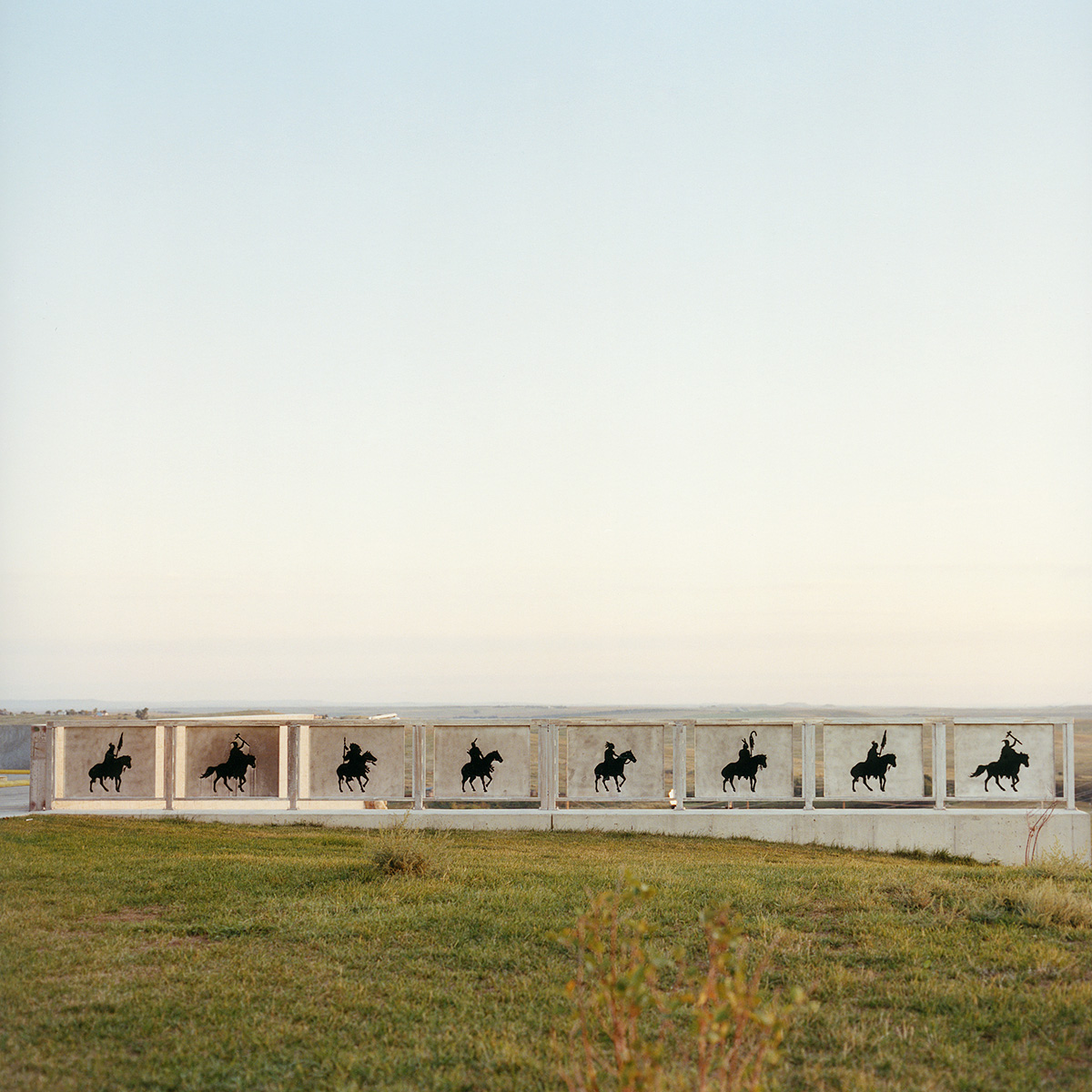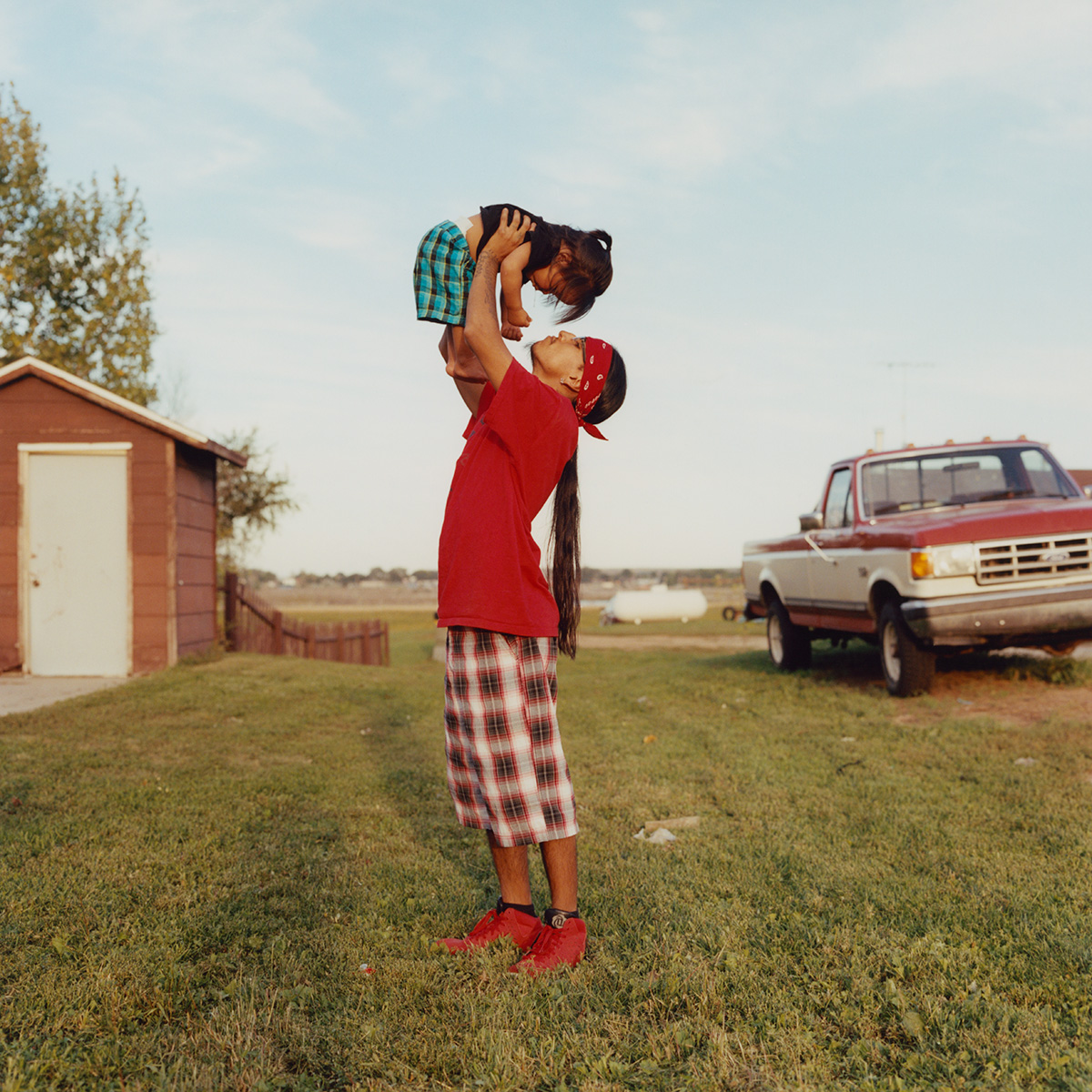On the Red Road
The idea for the Red Road Project first formed when Danielle SeeWalker was visiting Carlotta Cardana in England where she now lives. SeeWalker remembers reading an article about an area of land for sale near Wounded Knee, and Cardana mentioned having a lot of romantic ideas and misconceptions about what Native American culture is. Probably a lot of people do, she thought.
SeeWalker is a writer and Cardana a photographer, and as the longtime friends discussed people’s perceptions of Native American culture more at length, they had the idea to team up on a creative project highlighting the realities of Native American life and what Native cultures look like today.
“Me being from the culture gave us an ‘in,’ where a lot of stories being told are from outsiders looking in,” says SeeWalker. “That gave us a unique perspective: me being from the culture and wanting to share those stories that I knew about, and her desire to have that learning experience.”
SeeWalker is from the Standing Rock Sioux Tribe in North Dakota, though she hadn’t been home in several years before starting the Red Road Project. At the time she knew there were some ceremonial celebrations coming up so she suggested they buy plane tickets and visit her family.
They dove right in, meeting SeeWalker’s family and observing a powwow and other ceremonial events.

In the beginning, they didn’t have a specific focus or direction on what they wanted to do. “We just jumped right in to see where it would take us,” SeeWalker said. “We knew we wanted to go into a Native community and speak to people doing positive things in that community to keep their culture alive. One thing led to another and it really grew organically.”
Cardana pitched to some of her contacts from her commercial photography work and suddenly they had a commission from Marie Claire to go back out into the field on focus on Native American women for stories published internationally.
“The Red Road” is an English-language term for a concept in Native American cultures that refers to being “on the right path.” The Red Road Project has taken on several themes in the six years since they started working on it. Currently their focus is on issues happening in different Native communities, such as a tribe in Louisiana facing relocation due to climate change, and another tribe in Northern California trying to repopulate their sacred salmon.
“We’re taking the approach of finding a theme within the community and really honing in on that,” says SeeWalker.
The theme overwhelmingly seems to be tied to environmental issues associated with climate change, which SeeWalker says is unsurprising.
“Because of the ties within Native culture to the land, the water, the animals and plants, nature and the environment are very important and always have been,” she says, “but more so today than ever before with environmental and climate issues being so much more escalated.”
Though SeeWalker is from Standing Rock and she and Cardana visited during the pipeline protests, they chose not to document it.
“It affected me personally, and my family and friends,” says SeeWalker. “Carlotta and I went out there together but because it had so much attention and media coverage, we chose to just be there experiencing it. It’s really personal for me and I just wanted to be there as a community member.”

SeeWalker says that, even as someone from the culture, she was surprised to learn how much she didn’t even know about her identity, her community, and how much her own feelings of cultural displacement are shared by others.
“It was a learning process for me to rediscover who I am as a Native American woman. In general, there have been a lot of attempted genocides over the centuries and the cultural identity of Native Americans has been lost. A lot of Native Americans have struggled to figure out how they fit. I’ve always felt that way, but it’s been eye-opening to me how many people are in that same boat.”
They both note how ingrained the oppression from the American government is in every single aspect of life “on the rez.” In Wyoming, they noticed a lot of “blown up, burned out” houses. Some were drug labs, a stereotype of the Southwest that is regrettably true, but others were due to short circuits in the electrical system because the American government controls all aspects of building on reservation land without any of the regulatory oversight of non-tribal lands. The electrical wiring work is often shoddy and unsafe, so if someone turns on the microwave while a hair dryer is running, the whole house could catch fire. Many people also shower with their windows open, because if they didn’t gas could accumulate inside the house and cause an explosion.
“These are really only things you would know if you lived there and experienced it,” Cardana says. “The government purposely keeps the oppression going, despite what they say. They’ve never had an interest in making the lives of indigenous people in this country better.”
SeeWalker says that in her childhood home of Standing Rock, the average household has about 17 people living in one house with no running water and no adequate heating or cooling. People freeze to death inside of their homes.
“These are literally third world islands in the biggest economy on Earth,” she says. “This is what they’re dealing with. We highlight all of the positive things that are happening, but this is what it’s contrasting with. This is what they’re up against.”

The Red Road Project is entirely self-funded and the two women live on different continents and have other jobs, all of which can make planning a challenge. After six years of fieldwork they want to take a break and focus on putting together a book on the project.
“For documentary work to be meaningful it needs time and intimacy,” says Cardana. “It’s a lot of effort financially and personally. But whatever happens, we need to continue the project because it is something beyond us that needs to be out in the world.”
She adds, “The strength and resilience of the people we’ve met has made me more aware of my privilege and more impressed by what these people have gone through, and how they have come out of certain situations.
Banner image: Tired of being constantly discriminated against, Andy Jones left his small reservation town in Arizona and moved to Hollywood as a young man, taking advantage of the Indian Relocation Act of 1959. With the intent to decrease subsidies to the reservations, the US government encouraged Native Americans to relocate to certain cities, where they were given temporary housing and financial help. However, the program had devastating effects: people felt isolated from their communities and faced constant discrimination. This caused many to end up homeless and addicted to alcohol and drugs with no resources to return back to their reservation. Andy managed to overcome his addiction and today he works at a support center for “urban Indians” where he leads the senior group. He is also a traditional percussionist and member of a drum circle in Venice Beach.
All photos courtesy of The Red Road Project.

(1) How do you like to collaborate?
Carlotta Cardana: I think collaboration is a very important part of our project. Collaboration between us comes quite naturally: We’ve known each other for 20 years, so things are very fluid. But we want the people we feature in our project to have a voice everything we do—with the pictures and the interviews, there’s a lot of the person we’re talking about in there. For pictures there’s always a discussion of where they want to be photographed. We leave them some control over the factors that make up the images. Collaboration is key in everything.
(2) How do you a start a project?
CC: Get a plane ticket and don’t think about it too much. That’s the way we do things! We don’t do a lot of planning beforehand. We go with a gut feeling that something is worth discussing and then we go and have an experience in the field. We just go there and learn about the subject matter, and that takes time.
Danielle SeeWalker: We don’t do a whole lot of in-depth planning.
CC: Right now it’s easier because we have materials to show and the project has some visibility, but in the beginning it was more of a gamble. But you can’t think about it too much or you won’t do it.
(3) How do you talk about your value?
CC: We don’t have active conversations about our values. We’re both into in social issues and we both believe in fairness and equal opportunity. This project in a way is an expression of our values, especially for Danielle because it’s so close to her experience and her story. This project is an opportunity for us to do something for the things we believe in. We just try to be helpful. I don’t think the two of us can change the world, but we can do a little to leave things better than we found them. That was always told to me: “Leave things a little better than how you found them.” This project is an opportunity for us to do that.
(4) How do you define success?
DS: For me, it’s when I get some sort of validation from Native Americans; when my peers within the community say something on, “Wow, this really touched me.” When people within the community of the project’s topic—with this project it’s Native Americans—when they have positive things to say or are feeling inspired by it, that to me is a success.
CC: Same here.
(5) How do you fund your work?
CC: Credit cards.
DS: It’s all funded by however we can come up with money on our own. We do try to apply for grants, but it’s quite tricky.
